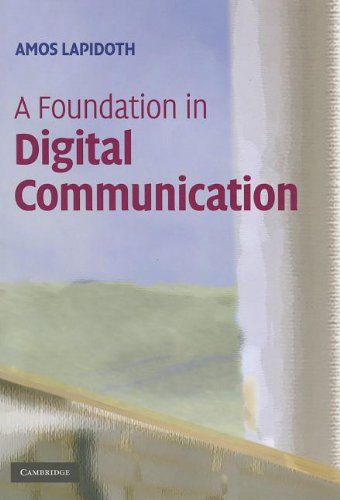
A Foundation in Digital Communication
by Amos Lapidoth
Publisher: Cambridge University Press 2009
ISBN/ASIN: 0521193958
ISBN-13: 9780521193955
Number of pages: 749
Description:
This intuitive yet rigorous introduction derives the core results of digital communication from first principles. Theory, rather than industry standards, motivates the engineering approaches, and key results are stated with all the required assumptions.
Download or read it online for free here:
Download link
(7MB, PDF)
Similar books
 Advancement in Microstrip Antennas with Recent Applications
Advancement in Microstrip Antennas with Recent Applicationsby Ahmed Kishk - InTech
The book discusses basic and advanced concepts of microstrip antennas, including design procedure and recent applications. Book topics include discussion of arrays, spectral domain, optimization, multiband, dual and circular polarization, etc.
(9127 views)
 Frequency Modulation
Frequency Modulationby August Hund - McGraw-Hill
The purpose of this book is to present an engineering text on frequency modulation covering both basic principles and the design of commercial apparatus. The practical applications that are described follow closely good engineering practice.
(7521 views)
 Principles of Communication
Principles of Communicationby Hema A Murthy - NPTEL
Topics: Signal Spaces; Fourier Series; Fourier Transform; Sampling Theorem; Discrete Time Signals; Z Transforms; Basics of Probability Theory and Random Processes; Bandwidth; Amplitude Modulation; SSB - VSB Modulation; Noise Analysis AM, FM; etc.
(24718 views)
 Understanding OSI
Understanding OSIby John Larmouth - Prentice Hall
Provides an intelligent beginner with an understanding of OSI (Open Systems Interconnection). It is not an exposition of the technical detail of the OSI Standards, it aims to explain why OSI is the shape it is, and a guide to computer protocols.
(21118 views)